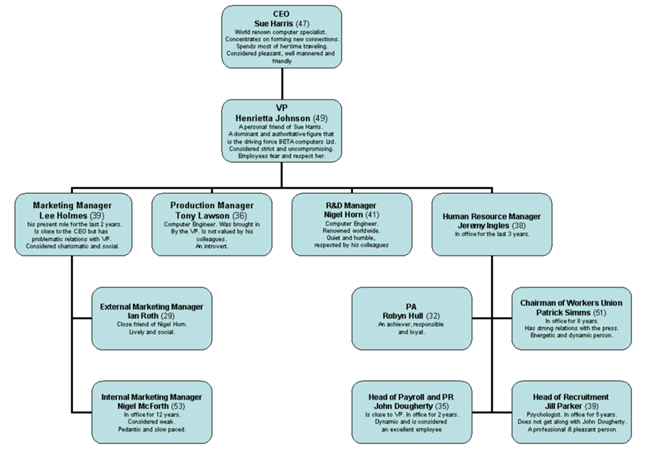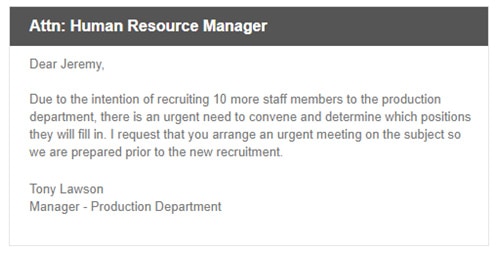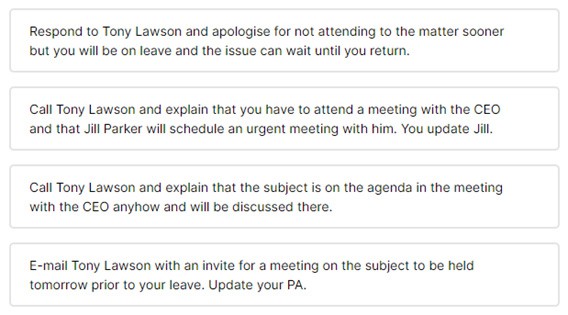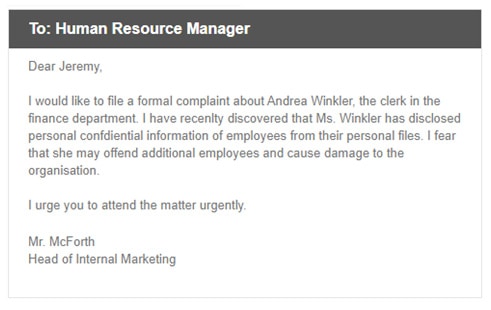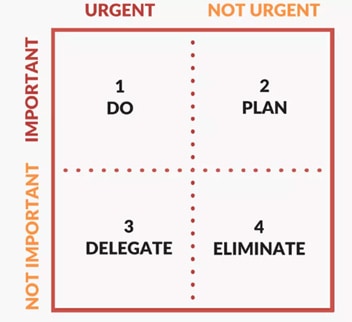In Tray Exercise Preparation Guide: Examples and Tips for Success
In tray exercises are a popular assessment activity used by many employers as part of their recruitment process.
They will put your professional skills to work, so make sure you go into your in tray exercise thoroughly prepared!
In this free in tray exercise guide we will show you:
- A detailed in tray exercise example (plus where to find more)
- 5 key questions to ask yourself when you get started on the day
- 4 expert tips to help you pass the in tray exercise with great results
You can find our top recommended in tray exercise practice tests here.
What is an in tray exercise?
The in tray exercise is a business simulation assessment that employers use to evaluate your professional skills in an actual work scenario.
You will take on the role of a company employee and deal with the workload of a typical day, in the form of emails, reports, meeting requests and so on.
The exercise is usually tailored to the role you are applying for and will allow employers to assess how you handle large amounts of information, multiple tasks and time demands. It will show them whether you can use your time efficiently, prioritise your workload, identify key issues and resolve problems.
This allows them to evaluate your overall work style and approach and decide whether you’d be a good fit for the role.
Note: The in tray exercise is very similar to the e-tray exercise, which is the digital equivalent and completed on a computer.
What to expect in an in tray exercise
In tray exercises are paper-based and must be completed in person, usually at an assessment centre.
The exercise can go anywhere from 30 minutes to three hours in length, depending on the employer and job role and whether you are scheduled to do any other assessment centre exercises on the day.
The typical format of an in tray exercise is to give you between 12 and 30 in tray items for you to prioritise and action. These will be paper documents of printed emails, spreadsheets, calendars and post-it notes.
You will need to decide how to deal with each one, whether that’s returning a call, scheduling a meeting, responding to an email, or delegating tasks to another staff member.
To action each in tray item, you will need to:
- Choose your response from a list of multiple-choice options
- Rank a list of responses from ‘most effective’ to ‘least effective’
- Create a prioritised to-do list, or;
- Prepare a written response
You will also receive a detailed brief and background information to give you more context and help you make decisions, which will typically include:
- Your role and responsibilities
- The company’s key issues and objectives
- A list of the staff members you are responsible for, other relevant colleagues and supporting departments
- A summary of third parties and your relationships with them
- A business calendar for the next 2-3 months
In tray exercise example
Now let’s work through an in tray exercise example from JobTestPrep.
With that information in mind, here is your first in tray item:
What do you do to deal with this issue?
And now for the next item:
What do you do?
And finally:
Do you:
Get plenty more examples and the best in tray exercise practice tests here.
How to pass an in tray exercise: 4 pro tips
#1: Read all the documents carefully
There is a lot of information to work with during an in tray exercise, and it can easily become overwhelming if you don’t have a system in place for analysing and classifying all the different documents.
Before you start actioning anything, make sure you take the time to thoroughly read through all the documents you’re given – including any briefing material – and get yourself into the right mindset for a person working in this role.
Consider what the employer wants from the ideal employee, the skills and attributes you need to show, and the company values, and keep these points in mind as you go through the documents.
You may also find it helpful to bring along some pens and highlighters to make notes as you’re working and mark the more urgent items.
#2: Organise and prioritise
Some in tray items will be more urgent and important than others, and assessors want to see that you can recognise and prioritise these over the others as well as how you specifically deal with them.
As you start working through each item, we recommend asking yourself these five key questions to help you clarify their importance and prioritise them correctly:
- Does this item require your personal attention, or can it be delegated to another member of staff?
- Does this item require immediate attention, or can it be postponed? If it can be postponed, until when?
- Does this item concern the entire organisation, another member of the organisation, or is it a personal matter?
- What is the deadline for this item, and does it depend on the completion of other tasks?
- How important is this item in relation to the others?
The Eisenhower Matrix is a handy tool to use here and can help you group tasks based on urgency as well as identify which tasks can be delegated or left undone. You can create your own like this:
And learn more about the Eisenhower Matrix and how to use it here.
#3: Manage your time
Time management is crucial during an in tray exercise, and assessors will be looking to see that you can deal with everything in your in tray without getting overwhelmed by detail.
With so much information to sift through, you need to be able to identify the most important issues that have a significant impact on the organisation and spend the majority of your time dealing with them, rather than getting distracted by trivial items.
Be aware of the time as you work through the exercise.
Work swiftly and systematically, but don’t rush, as it’s likely to lead to silly mistakes such as overlooking a key piece of information or making poorly thought-out decisions.
And of course, the best way to improve your time management skills for the in tray exercise is to properly prepare for it. Which leads us to our final tip…
#4: Practice!
You must spend time practising in tray exercises if you want the best chance of success.
Going through the process with a real workload will help you understand exactly what to expect and how to approach the task, improve your skills and confidence, and reduce stress so you can stay calm and focused on the day.
You can get a full range of tailored in tray exercise practice tests here, which are based on the actual tests used by employers.
You’ve got this! Good luck.
Some more guides to help you succeed…
- Numerical Reasoning: Numerical Reasoning Test Guide: 5 Proven Tips to Succeed
- Verbal Reasoning: Verbal Reasoning Test: What You Need to Know to Pass
- UKCAT: UKCAT Test Guide: 4 Secrets to UKCAT Success 2020
- Watson-Glaser: Watson-Glaser Test: Everything You Need to Know to Pass
- Mechanical Comprehension: Mechanical Comprehension Test Guide 2020



